Brain Injury Awareness Week, 2024
Brain Injury Awareness Week 2024 – What’s Your Connection?
August 19 – 25, 2024
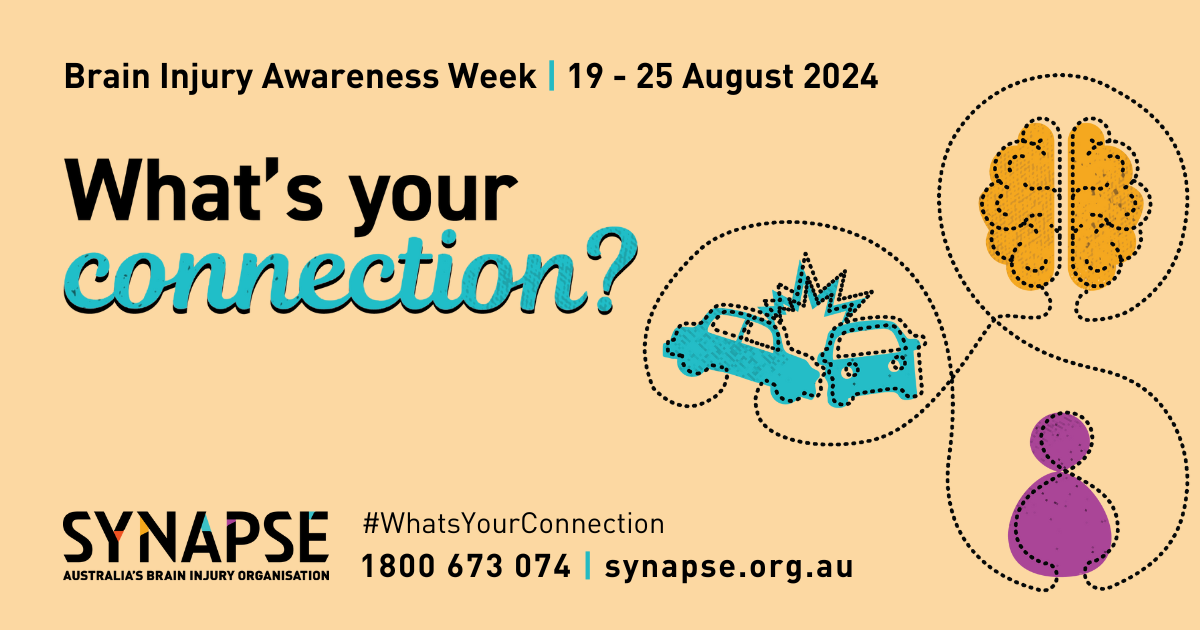
Every year, Australians come together during Brain Injury Awareness Week (BIAW) to shine a light on the significant challenges and diverse experiences of the 1 in 45 Australians living with a brain injury. This year, from August 19th to 25th, we are supporting our partner organisation, Synapse, in exploring the theme "What's Your Connection?", delving into the deep and varied impacts of brain injuries, not just on individuals, but on their families, friends, and communities.
At The Hopkins Centre, our commitment to groundbreaking rehabilitation and disability research is driven by a collaborative approach that unites service users, clinicians, and researchers. This Brain Injury Awareness Week, we are excited to spotlight a number of exciting projects that exemplify the spirit of connection.
BIAW Director Update
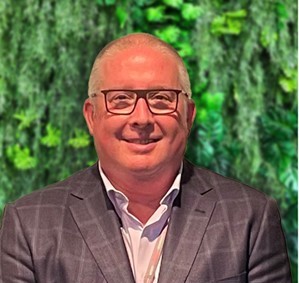
Dear Hopkins Centre members and friends,
As the Director of The Hopkins Centre, I am proud to welcome you to Brain Injury Awareness Week 2024. This year, Hopkins continues our commitment to shining a light on the experiences, challenges, and triumphs of the 1 in 45 Australians living with a brain injury. The BIAW theme for this year, "What's Your Connection?", invites us all to explore and strengthen the ties that connect the lived experience of brain injury with bold ideas and better solutions for rehabilitation, research and networks of support that foster resilience and understanding.
The lives of many thousands of Australians are touched by brain injury, impacting not only the individual involved but also their families, friends, and caregivers. The ripple effects are profound, influencing every aspect of life from physical and cognitive abilities to emotional and social well-being. This week, we aim to amplify the voices that need to be heard, share the stories that need to be told, and highlight the research that drives us towards better solutions.
At The Hopkins Centre, our approach is driven by a collaborative spirit that values the insights and experiences of those with experience of disability and rehabilitation. This week, we will feature a series of blog posts spotlighting groundbreaking projects and research initiatives related to acquired brain injury, that demonstrate our commitment to innovation and inclusive practice. These include advances in rehabilitation, cutting-edge disability and rehabilitation research, and community-based projects that provide real-world benefits to individuals and their support networks.
As we embark on this week's activities, I invite you to engage with our content, participate in discussions, and share your experiences. Your involvement is crucial as we work together to improve lives and build a more understanding and supportive society.
Thank you for joining us in recognizing Brain Injury Awareness Week. Together, we can make a significant impact, continuing to learn from each other and working side by side to tackle the challenges and celebrate the achievements of those living with a brain injury and their families, friends and carers.
Warm regards,
Prof. Tim Geraghty
Director, The Hopkins Centre
Project Spotlight: Understanding ABI in Public Transport Environments
Seed Research Navigating Connections Beyond the Road: ABI and Public Transport
.png) Image credit: Izak Hollins
Image credit: Izak Hollins
The Project: After an acquired brain injury (ABI), many people experience a period of ‘driving disruption’, where they are not medically cleared to drive and need to access the community through other means, including public transport. The Navigating Rail Transport After Acquired Brain Injury project seeks to understand the experiences of people who have an ABI when using trains. A multidisciplinary team including lived-experience expertise, occupational therapy, speech pathology, social work and architectural perspectives, led by Louise Bassingthwaighte, will conduct walk-along interviews with participants during their journeys across various train stations, with the aim of uncovering the direct impact of environmental design on their ability to access the community post-hospital discharge.
The Connection: Just as neural networks in the brain create pathways that help us think, feel, and move, our physical environments must also foster connections that are accessible and supportive. This study not only examines the physical paths our participants take but also considers how these paths reflect the connectivity and accessibility of our urban landscapes. By understanding the interactions between cognitive impairments and public transport systems, we aim to improve how these environments are designed to better serve those with ABI.
The Impact: Insights gained from this project will inform best practices in Universal Design for public transport systems. This ensures that train stations and other public infrastructure can be navigated easily by those with cognitive impairments. The project's outcomes will directly influence clinical rehabilitation practices, offering new strategies for community access training and enhancing the support provided to ABI individuals during periods of driving disruption.
Why It Matters: For many with ABI, the ability to travel independently is a critical step towards recovery and social integration. Improving public transport accessibility has far-reaching implications, enabling not just those with ABI but also a broader community with varied accessibility needs to navigate urban spaces more freely and confidently.
Expected Outcomes: The findings from this study will culminate in practical applications, including integration into ABI Transitional Rehabilitation Service's clinical materials, presentations at conferences, and the development of a design guidance document for public transport systems. This document will specifically address the needs of individuals with cognitive impairments and is intended for use by architects, engineers, and policy makers involved in public infrastructure projects.
As we continue to explore the theme of "What's Your Connection?" we invite you to consider how every element of our society can be better connected to support the diverse needs of individuals living with brain injuries. Follow our journey this Brain Injury Awareness Week and engage with us using the #BIAW24 #WhatsTheConnection.
Together, we can create a more inclusive and accessible world, one connection at a time.
NeuroRhythm: Drumming Up Connections
With Hopkins Centre Ambassador and mother of son with a brain injury, Belinda Adams OAM.
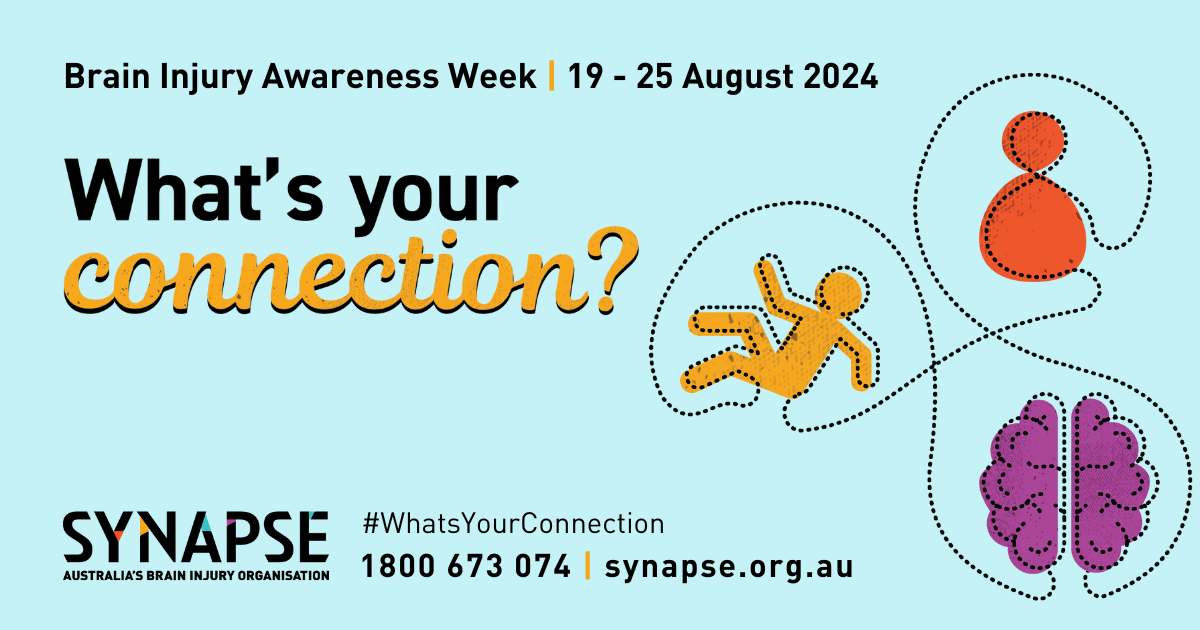
The Project: Funded by The Heart Foundation the project is spearheaded by Belinda Adams' Citrine Sun Entertainment, NeuroRhythm will be developed in partnership with The Hopkins Centre and The Creative Arts Research Institute (CARI). The NeuroRhythm Project is set to revolutionise rehabilitation for people with brain injuries through the power of music and movement. Based in Queensland, this innovative program offers Djembe drumming and free dance movements specifically tailored to individuals living with brain injuries.
The Connection: At the heart of "What's Your Connection?" is the recognition of our interconnected lives and the myriad ways we can support and uplift each other. The NeuroRhythm Project taps into this theme by using rhythmic drumming and dance to facilitate physical rehabilitation, emotional expression, and social interaction. These activities are not just therapeutic; they create a vibrant community around participants, fostering connections through shared experiences and the universal language of music.
The Impact: Participants in the NeuroRhythm Project experience a unique form of expression that transcends the typical barriers faced by those with severe disabilities. The rhythmic patterns of the drums and the freedom of dance provide a structured yet liberating space for individuals to connect with others, improve their motor skills and emotional well-being, and rediscover joy in movement—crucial aspects of recovery and resilience.
Why It Matters: For many living with brain injuries, social isolation and a lack of engaging cultural activities can be as debilitating as the physical aspects of their condition. NeuroRhythm addresses these challenges head-on, ensuring that every beat and every step contribute to building stronger, more supportive networks of care and understanding.
As we continue to explore and expand the connections within our community, projects like NeuroRhythm are vital. They not only enhance the quality of life for individuals with brain injuries but also foster a greater understanding of the power of community and shared experiences in the healing process.
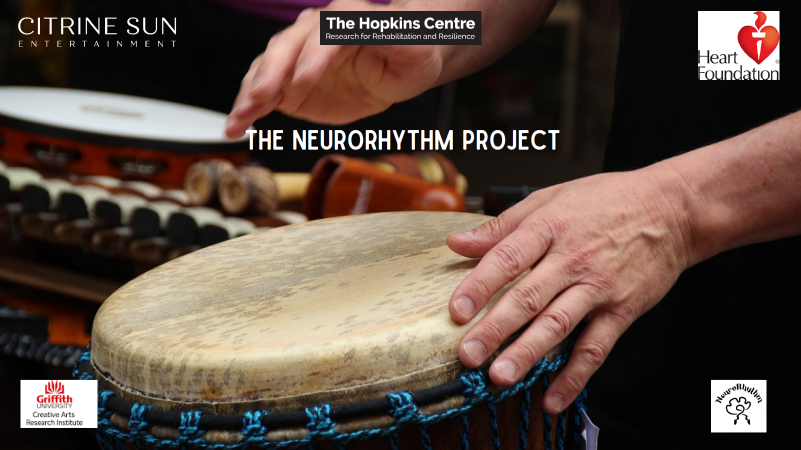
Personalising Inpatient Neurorehabilitation Environments
A 2024 Seed Funded Research Project
With this year’s Brain Injury Awareness Week theme of “what’s your connection”, we delve into a research project that explores the personal spaces of those recovering from neurotrauma. Led by Chief Investigator Kaitlyn Spalding, this 2024 Seed Funded research project aims to understand how and why patients modify and personalise their rooms in inpatient neurorehabilitation settings.
.jpg)
The Research: The project titled "If, How, and Why Patients Modify and Personalise Their Rooms in Inpatient Neurorehabilitation Environments" seeks to uncover the ways in which patients engage with and transform their personal spaces during extended hospital stays. Despite the known benefits of enriched environments on mood and recovery outcomes, there remains a significant gap in our understanding of patient-driven modifications in these settings.
The Connection: This study connects the physical and emotional landscapes of rehabilitation. It acknowledges that the spaces where patients recover are not just backdrops, but active elements in their healing process. By exploring the personalisation of these spaces, the project seeks to reinforce the connection between environment and recovery, highlighting how tailored spaces may enhance rehabilitation.
The Impact: The insights from this study will directly influence how neurorehabilitation environments are designed and utilised. The results are expected to lead to the development of guidelines for room personalisation that can be implemented across various healthcare settings, enhancing the patient experience and potentially improving clinical outcomes.
Why It Matters: As we consider "What's Your Connection?" we recognise that each patient’s connection to their environment can profoundly affect their recovery journey. A patient’s environment can be personalised to create a connection to self in an otherwise completely foreign and depersonalised space. This project emphasises the importance of patient-centred care and the role of environmental factors in therapeutic processes.
This Brain Injury Awareness Week, let's explore how the spaces we inhabit can become integral to healing.
Publication Spotlight: Personal Resources and Long-Term Outcomes in TBI Recovery
Understanding the Individual Behind the Injury

The Study: An in-depth review, led by Dr Emily Bray examined the influence of pre-injury and early psychological resources, such as coping styles, resilience, self-esteem, and emotional stability, on the long-term outcomes of individuals with moderate-to-severe TBI. The review integrates findings across numerous studies to offer a comprehensive understanding of how these personal resources impact recovery trajectories.
The Connection: In line with this year’s theme, "What's Your Connection?", this publication stresses the importance of connecting to who the individual was before their injury. Understanding a person’s enduring qualities provides crucial context for their rehabilitation journey, highlighting how a person’s previous ways of thinking and reacting to stressors and life challenges influence their ability to cope and adapt post-injury.
The Impact: Key findings from Dr Bray's review indicate that individuals with more active coping styles and higher levels of resilience and self-esteem prior to their injury tend to experience better long-term psychosocial outcomes. Interestingly, family members were more likely to observe changes in traits like emotional stability, conscientiousness, and extraversion in the person with TBI, which highlights the need to seek the viewpoints of family members.
Why It Matters: These insights underscore the benefits of tailoring interventions according to individual’s psychological makeup (including character strengths and skills), as well as taking into account changes perceived by the individual and close others. By aligning rehabilitation strategies with the person’s pre-injury characteristics, therapists can more effectively support individuals and their families in navigating the complex process of recovery.
Clinical Applications: The findings highlight the potential for rehabilitation programs to be informed by individuals’ personality and coping strategies, facilitating a more personalised and effective recovery process.
As we explore the theme of "What's Your Connection?" this Brain Injury Awareness Week, we invite you to reflect on the deep and personal connections that influence recovery from brain injury. Understanding these connections can inform more person-centred approaches to rehabilitation that respect and reflect individual identities and histories.
Engage with us this week by sharing your thoughts and experiences using the hashtag #BIAW24 #WhatsTheConnection. Together, we can build a more supportive and understanding community for those navigating life after brain injury.
Reintroducing BEEHIVE Neurorehabilitation Lab
BEEHIVE is an applied neurotrauma research lab, focused on the human brain and environment interface after trauma.
Aligned with The Hopkins Centre research stream "Enabling Technologies and Environments", this lab is bringing an evidence-based understanding of how enriched environments can promote optimum functioning after injury or illness in cognitive, motor, sensory and how social capacity will provide opportunities for enriched experiences from hospital to home.
This project aims to do this through:
- Advances in technology and neuro-feedback mechanisms to build neuroscientific evidence and knowledge in rehabilitation
- Optimising recovery and rehabilitation through enrichment principles and neuroplasticity research
- Testing new tools and processes with rehabilitation clinicians at the Gold Coast University Hospital
Led by environmental psychology academic Dr Michael Norwood and neuroscience and neuropsychologist Professor Heidi Zeeman, along with clinical lead Susan Jones, the BEEHIVE lab is a collaborative initiative, in partnership with The Hopkins Centre, Griffith University, and Gold Coast University Hospital.
This project establishes THC and Griffith University as one of the few Australian research institutions taking this unique approach to rehabilitation, aligning the strengths of the clinical unit at GCUH with a strong project team.
Visit the BEEHIVE page to learn more.
Publication Spotlight: Understanding Lifespace Changes After ABI
Profound changes in Lifespace and occupational participation after an acquired brain injury (ABI).
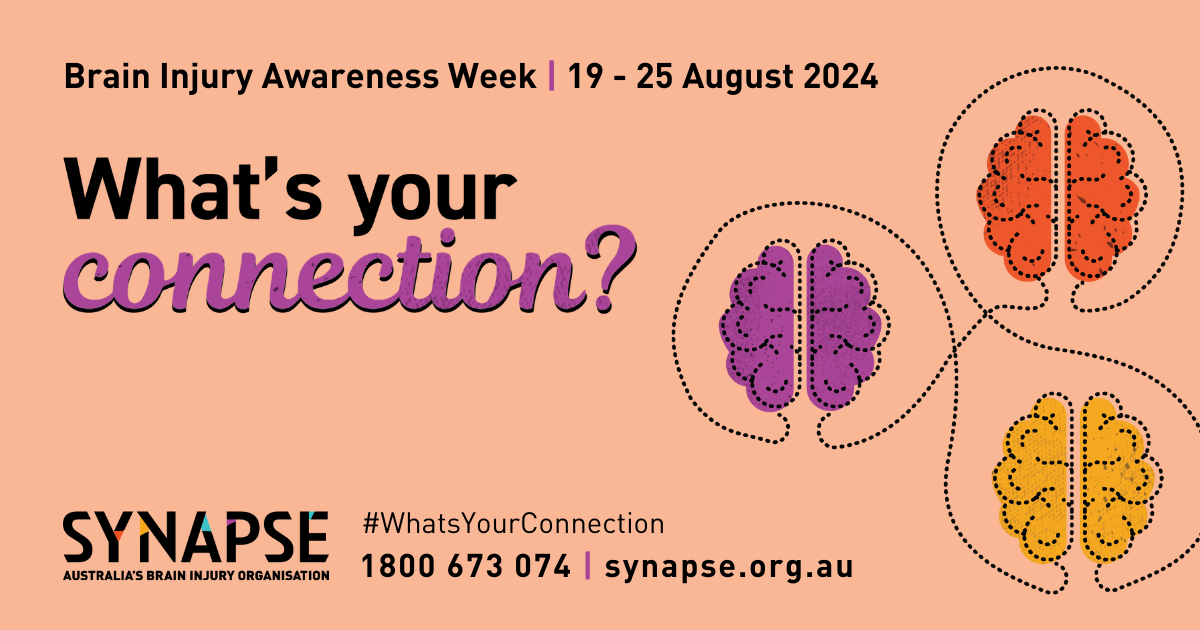
The Research: Conducted with a mixed-methods approach, this study combined quantitative assessments using a travel diary and Lifespace Mobility Assessment-Composite with qualitative semi-structured interviews. The research aimed to uncover the complexities of Lifespace—how far and with whom individuals venture out—as they navigate life without driving after an ABI.
The Connection: Aligning with this year’s theme "What's Your Connection?", this study highlights the critical role of community access in maintaining connections to community, work, and social life. It examines the real-world impacts on Lifespace when driving is disrupted, emphasising the necessity of supportive networks and adaptive strategies to maintain these essential connections.
The Impact: The results revealed that individuals typically left home once a day, mainly for necessary activities like shopping, medical appointments, and social engagements, but often required assistance. Over half reported a restricted Lifespace, heavily reliant on family for support. The study underscores the need for tailored rehabilitation approaches that help individuals regain independence and reconnect with their communities.
Why It Matters: The publication sheds light on the challenges faced by individuals during driving disruptions and the importance of occupational therapy in supporting re-engagement in valued community-based occupations and facilitating an adaptive transition to new forms of community participation. By understanding these dynamics, rehabilitation professionals can better support individuals in rebuilding their occupational identities and Lifespace after an ABI.
Implications for Rehabilitation
Adaptive Strategies: The study advocates for occupational therapists to provide customised pathways to return to driving and to enhance community access through developing new skills, habits, and routines. This adaptive approach is crucial for fostering participation, satisfaction, and confidence in life post-injury.
Community and Family Involvement: With the majority of support coming from family members, the study also highlights the role of community and familial support systems in the rehabilitation process, emphasising the collective effort required to navigate the challenges posed by ABI.
Publication details:
Bassingthwaighte, L., Gustafsson, L., & Molineux, M. (2024). Lifespace and occupational participation following acquired brain injury during driving disruption: a mixed methods study. Disability and Rehabilitation, 1–15. https://doi.org/10.1080/09638288.2024.2338192
As we reflect on "What's Your Connection?" during this Brain Injury Awareness Week, we invite you to consider the essential role of mobility in maintaining our social and occupational connections. Engage with us by sharing your thoughts and experiences using the hashtag #BIAW24 #WhatsTheConnection.
Together, we can work towards solutions that enhance the lifespace and community participation of those affected by driving disruptions following an ABI.
Biggest Beanie Event for Brain Injury Awareness Week!
On Sunday, August 25th, the Biggest Beanie Brisbane has ever seen will be constructed in front of Brisbane's iconic Story Bridge as part of a documentary to raise awareness for brain injury.
The beanie will be made up of the thousands of unique knitted and crocheted squares which have been quietly hand crafted by volunteers all over Australia and around the world, reflecting the often invisible journey of brain injury survivors, on their road to recovery.
Come along and join The Hopkins Centre's Belinda Adams OAM as we witness the beanie rise up in front of the Story Bridge, signifying the importance of everyone's story and showcasing the power of what we can achieve when we all work together to shine a light on what is known as the invisible disability.
![]() Click here to view the Event Details
Click here to view the Event Details
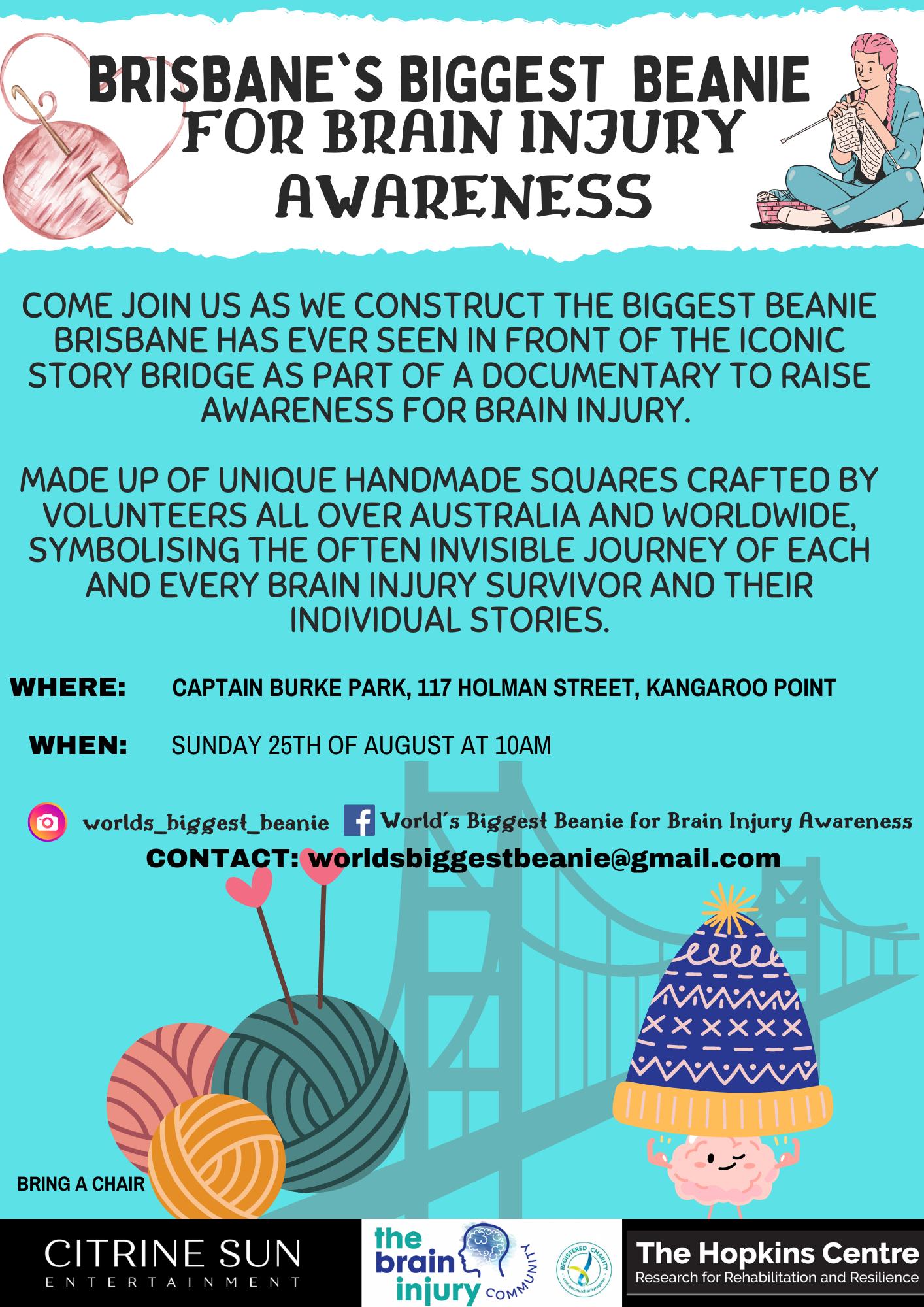
Join Us This BIAW
We invite you to engage with us this Brain Injury Awareness Week. Read about our research, projects, events and publications, and discover more about how we can create bold ideas and better solutions for the field of disability and rehabilitation, together. Follow and contribute to the conversation with the hashtag #BIAW24 #WhatsTheConnection.

Tags: Brain Injury Awareness Week, BIAW
Related Articles
- This week is Brain Injury Awareness Week #BIAW20
- THC Ambassadors share their experiences this Brain Injury Awareness Week
- Brain Injury Awareness Week
- Brain Injury Awareness Week BIAW21: Julia Robertson's story
- Shane Pivac: Kintsugi – The New Me

